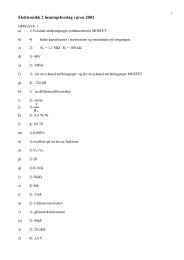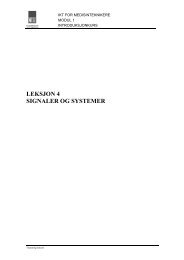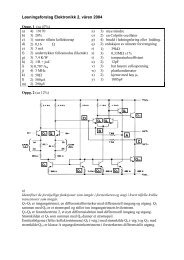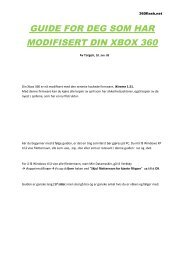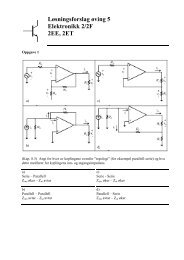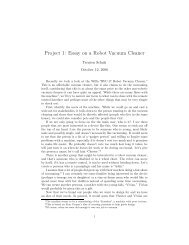The Online World resources handbook
The Online World resources handbook
The Online World resources handbook
You also want an ePaper? Increase the reach of your titles
YUMPU automatically turns print PDFs into web optimized ePapers that Google loves.
Automatic communication http://home.eunet.no/~presno/bok/16.html<br />
learn and remember online commands. <strong>The</strong> system will do it for you.<br />
<strong>The</strong> minimum solution<br />
Automatic data communication in its simplest form entails the following:<br />
One keystroke to get the communications program to dial a number, and send user<br />
name/password when the online service requests this information.<br />
Macro commands (like in a word processor) for navigating through an online<br />
service, searching, and to send complex commands by pressing one key.<br />
Most communication programs have a macro language or a script language. <strong>The</strong>re are<br />
also macro programs designed to be used with Microsoft Windows. In many instances,<br />
users are taking advantage of these features without even knowing it. This is the case for<br />
many of those connecting to the Internet with a simple mouse click.<br />
If this has not been done for you, then you will probably never regret time spent on<br />
learning how to use these features. At a minimum, you should be able to have your<br />
system log on automatically to your favorite service provider.<br />
Autologon spares you the task of remembering your user name and password.<br />
Besides, most people are only able to use the keyboard at a low speed. <strong>The</strong>y easily get<br />
frustrated by having to correct typing errors.<br />
Auto logon to the Internet<br />
Trumpet Winsock is a popular program used to set up a TCP/IP protocol connection<br />
with the Internet. It can dial up an Internet access provider, logon, and set up a SLIP,<br />
PPP, or a pseudo SLIP connection to the net using SLiRP or <strong>The</strong> Internet Adapter<br />
(TIA).<br />
You can use Trumpet by entering commands manually, but most users prefer to let<br />
the program do it for them. This is achieved by having all commands in a file called<br />
LOGIN.CMD. Trumpet reads this file when you click on Dialer, Login, and then logon<br />
to your service as instructed.<br />
We call LOGIN.CMD a script file. It is a text file that can contain a list of<br />
commands for dialing and navigating on an online service. You can write and edit it<br />
using Windows Notepad, DOS EDIT, or another utility that allows you to save the file as<br />
DOS or ASCII text. (Most popular script languages have the same requirement.)<br />
Trumpet's scripts can contain commands that test for the occurrence of small<br />
pieces of information sent by the access provider at given times (like the prompt<br />
"Password?").<br />
When this information is found, Trumpet can be set to send the proper response or<br />
command (in this case, your secret password).<br />
Let us look at a typical Trumpet LOGON.CMD file. Comments are written in lines<br />
above the given commands preceded with a #.<br />
# <strong>The</strong> output command tells Trumpet to send text to<br />
# the modem, in this case "ATZ" to reset the modem.<br />
# <strong>The</strong> "\13" refers to ascii character number 13<br />
# (Return). <strong>The</strong> effect is the same as if you were<br />
# typing ATZ followed by a press on the Return<br />
# key.<br />
output atz\13<br />
# <strong>The</strong> input command tells Trumpet to wait for the<br />
# preceding string, here for "OK" followed by "\n"<br />
# (short hand for \10, the Line Feed character).<br />
input 10 OK\n<br />
7KH QH[W RXWSXW FRPPDQG VHQGV D PRGHP VHWXS<br />
# string. Note that this string is particular to<br />
# my modem. You may well need other commands.<br />
# Also, note that the "\" character has a special<br />
# function in Trumpet. <strong>The</strong>refore, AT commands like<br />
2 of 9 23.11.2009 15:49



